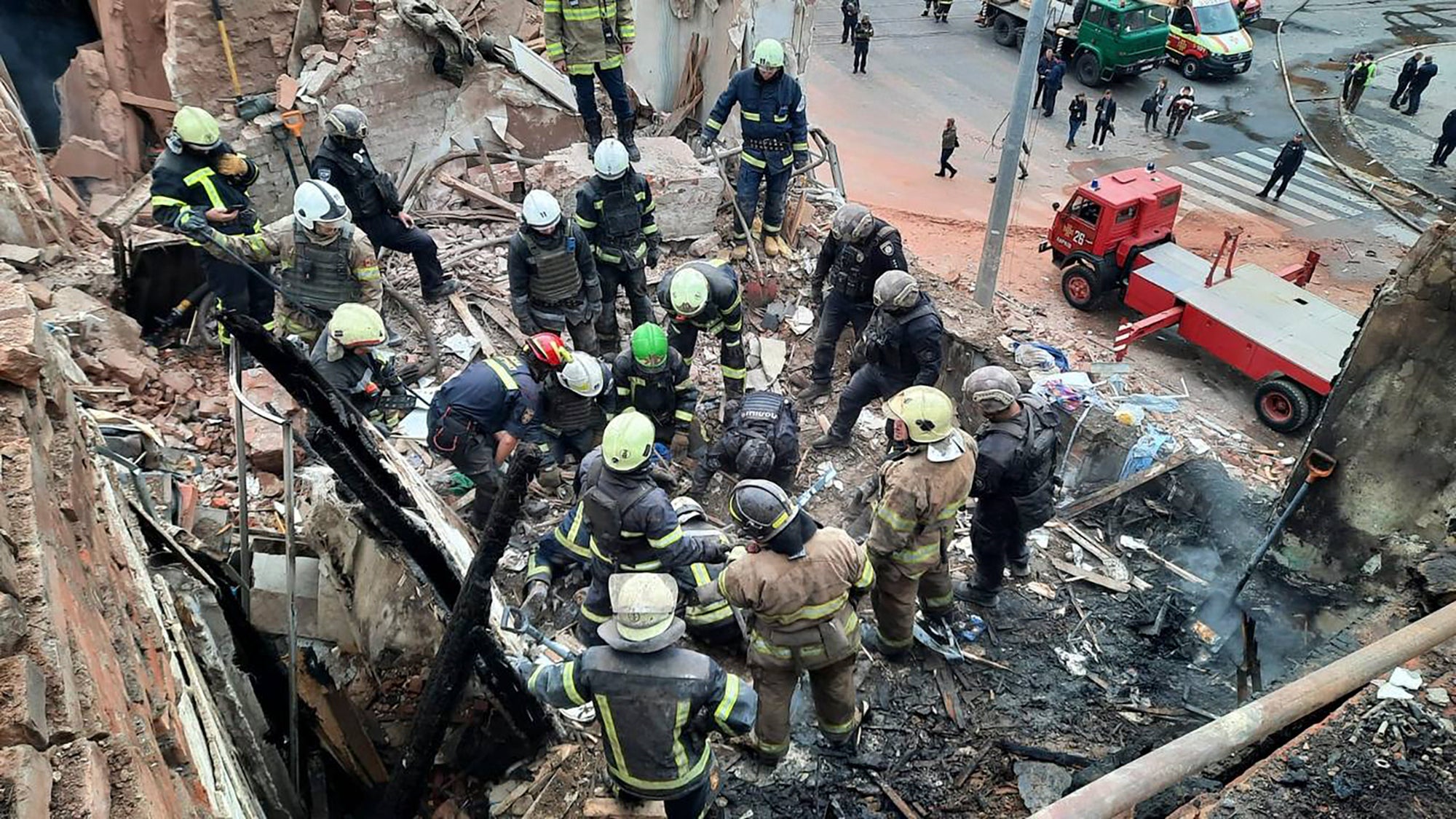What are Russia’s Iskander missiles? The weapon which killed 52 following funeral near Kharkiv
Ukraine claims a number of Moscow’s Iskander ballistic missiles have been fired in the last 24 hours

Your support helps us to tell the story
From reproductive rights to climate change to Big Tech, The Independent is on the ground when the story is developing. Whether it's investigating the financials of Elon Musk's pro-Trump PAC or producing our latest documentary, 'The A Word', which shines a light on the American women fighting for reproductive rights, we know how important it is to parse out the facts from the messaging.
At such a critical moment in US history, we need reporters on the ground. Your donation allows us to keep sending journalists to speak to both sides of the story.
The Independent is trusted by Americans across the entire political spectrum. And unlike many other quality news outlets, we choose not to lock Americans out of our reporting and analysis with paywalls. We believe quality journalism should be available to everyone, paid for by those who can afford it.
Your support makes all the difference.Ukrainian officials have said a number of Russian Iskander ballistic missiles have struck the northeastern Kharkiv region in the last 24 hours.
A 10-year-old boy and his grandmother were killed in the city of Kharkiv itself , officials said on Friday morning, after a strike on Thursday afternoon in the same region killed at least 52 civilians in the village of Hroza. That attack was one of the deadliest attacks in the war in months.
Officials said preliminary information indicated the Kremlin's forces used two Iskander missiles in the attack on Friday, the same as in the previous day's strike. A number of people, including young children, were injured in both attacks, Kyiv said.
The Iskander short-range ballistic missiles have become common in Russian attacks on Ukraine, largely because they can travel around 300 miles. They are carried on a road mobile system, which is essentially the back of a truck, as opposed to being launched from a fixed site.
Once they are fired, the system is packed up and moved to avoid being hit by retaliatory strikes.
Unlike most mobile systems, Iskanders can fire two of its missiles from one vehicle, which substantially increases its firepower.
This has been used several times by Russian forces to carry out “double tap” strikes in which an initial missile destroys a target before a second one is fired into the area as rescue efforts are underway, according to Ukrainian officials.
Each missile can also be used independently, striking both static and moving targets. In the latter instance, target coordination is adjusted remotely while the missile is in the air.
The Iskander was first unveiled in 1996 to replace the Soviet Union’s Oka ballistic missile, which was discontinued under the Intermediate-Range Nuclear Forces (INF) treaty.
In 2006, the Iskander-M missile system was officially adopted by the Russian Army. Downgraded Iskander-E systems were subsequently delivered to Armenia in 2016 and Algeria the following year. With the last 12 months, Belarus has also acquired some Iskander systems from Russia.
Prior to the full-scale invasion of Ukraine, Russia reportedly operated 136 of the upgraded “M” systems, though that total has likely been reduced since then.
It can accommodate several different conventional warheads, including cluster, fuel-air explosive, bunker-busting and electro-magentic pulse. It is also nuclear-capable.
In June this year, two Iskander missiles were fired at the Ukrainian city of Kramatorsk, roughly thirty miles from the besieged city of Bakhmut in eastern Ukraine.
One of the missiles hit a popular pizza restaurant in the area - one of the few to remain open - while roughly 80 people were inside.
Thirteen people were killed, including 14-year-old twin sisters, a US Marine Corps veteran and a famous Ukrainian novelist. More than 60 people were injured.
Join our commenting forum
Join thought-provoking conversations, follow other Independent readers and see their replies
Comments